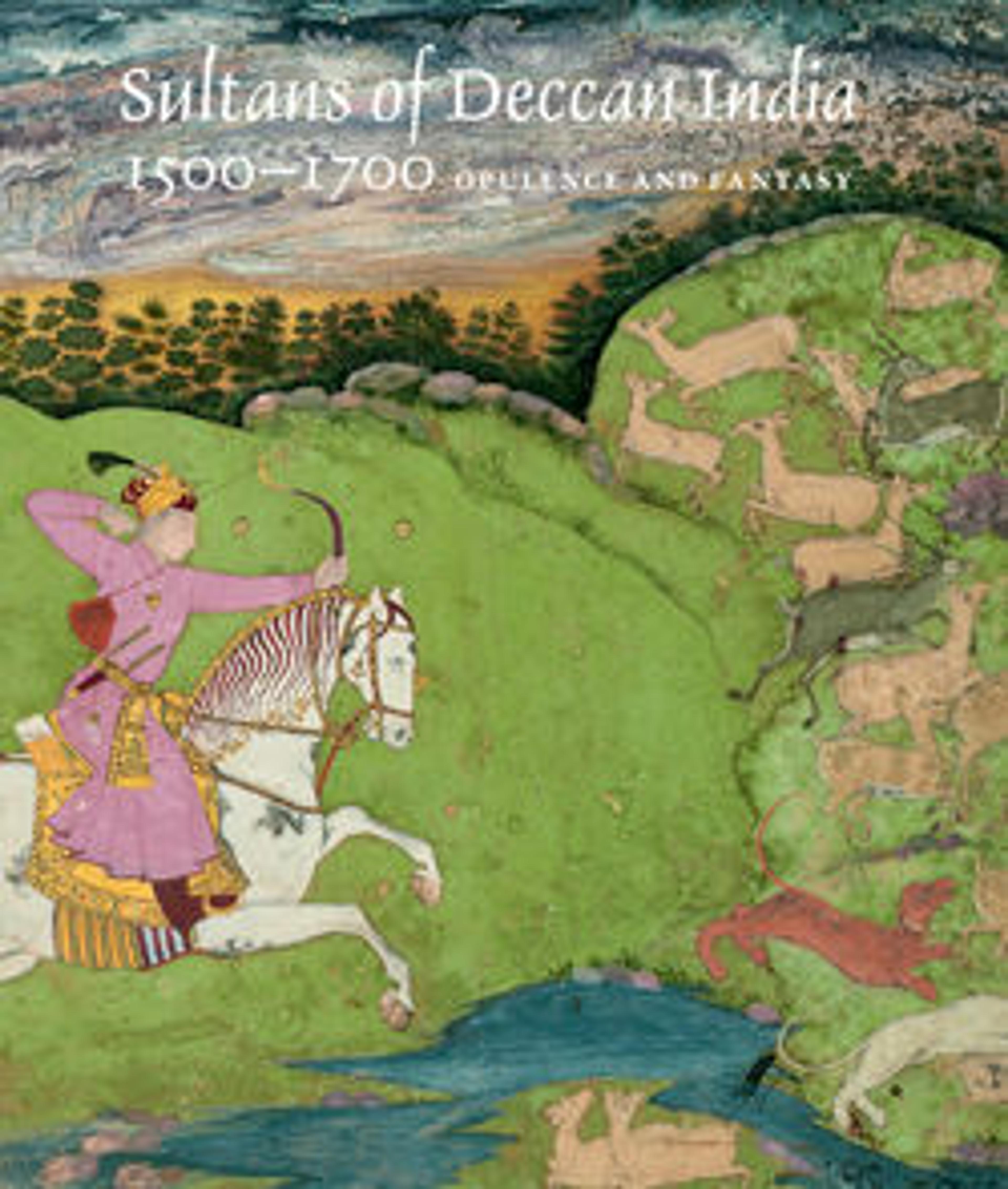Album Page with Cut-Paper Decoration
The decoration on this page is cut from tan paper and laid down on a blue paper background. It depicts flowering plants and a pair of long-legged water birds flanking a deer. The calligraphy, only partially deciphered, is integrated into the floral pattern, resembling foliage in the lower section and a tendril-like motif in the upper section. The words may provide the name of the artist (Baz Khan?) and an invocation to 'Ali.
Artwork Details
- Title:Album Page with Cut-Paper Decoration
- Date:ca. 1625–50
- Geography:Made in India
- Medium:Cut paper on paper, opaque watercolor, and gold
- Dimensions:H. 10 1/2 in. (26.7 cm)
W. 7 1/8 in. (18.1 cm) - Classification:Codices
- Credit Line:Cynthia Hazen Polsky and Leon B. Polsky Fund, 2002
- Object Number:2002.222
- Curatorial Department: Islamic Art
More Artwork
Research Resources
The Met provides unparalleled resources for research and welcomes an international community of students and scholars. The Met's Open Access API is where creators and researchers can connect to the The Met collection. Open Access data and public domain images are available for unrestricted commercial and noncommercial use without permission or fee.
To request images under copyright and other restrictions, please use this Image Request form.
Feedback
We continue to research and examine historical and cultural context for objects in The Met collection. If you have comments or questions about this object record, please contact us using the form below. The Museum looks forward to receiving your comments.
